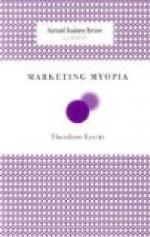Whence it appears that whenever the motion of the blood through the arteries is impeded, whether it be by compression or infarction, or interception, there do the remote divisions of the arteries beat less forcibly, seeing that the pulse of the arteries is nothing more than the impulse or shock of the blood in these vessels.
CHAPTER IV
Of the motion of the heart and its auricles, as seen in the bodies of living animals
Besides the motions already spoken of, we have still to consider those that appertain to the auricles.
Caspar Bauhin and John Riolan, [Footnote: i Bauhin, lib. ii. cap. II. Riolan. lib. viii, cap. I.] most learned men and skilful anatomists, inform us that from their observations, that if we carefully watch the movements of the heart in the vivisection of an animal, we shall perceive four motions distinct in time and in place, two of which are proper to the auricles, two to the ventricles. With all deference to such authority I say that there are four motions distinct in point of place, but not of time; for the two auricles move together, and so also do the two ventricles, in such wise that though the places be four, the times are only two. And this occurs in the following manner:
There are, as it were, two motions going on together: one of the auricles, another of the ventricles; these by no means taking place simultaneously, but the motion of the auricles preceding, that of the heart following; the motion appearing to begin from the auricles and to extend to the ventricles. When all things are becoming languid, and the heart is dying, as also in fishes and the colder blooded animals there is a short pause between these two motions, so that the heart aroused, as it were, appears to respond to the motion, now more quickly, now more tardily; and at length, when near to death, it ceases to respond by its proper motion, but seems, as it were, to nod the head, and is so slightly moved that it appears rather to give signs of motion to the pulsating auricles than actually to move. The heart, therefore, ceases to pulsate sooner than the auricles, so that the auricles have been said to outlive it, the left ventricle ceasing to pulsate first of all; then its auricle, next the right ventricle; and, finally, all the other parts being at rest and dead, as Galen long since observed, the right auricle still continues to beat; life, therefore, appears to linger longest in the right auricle. Whilst the heart is gradually dying, it is sometimes seen to reply, after two or three contractions of the auricles, roused as it were to action, and making a single pulsation, slowly, unwillingly, and with an effort.




